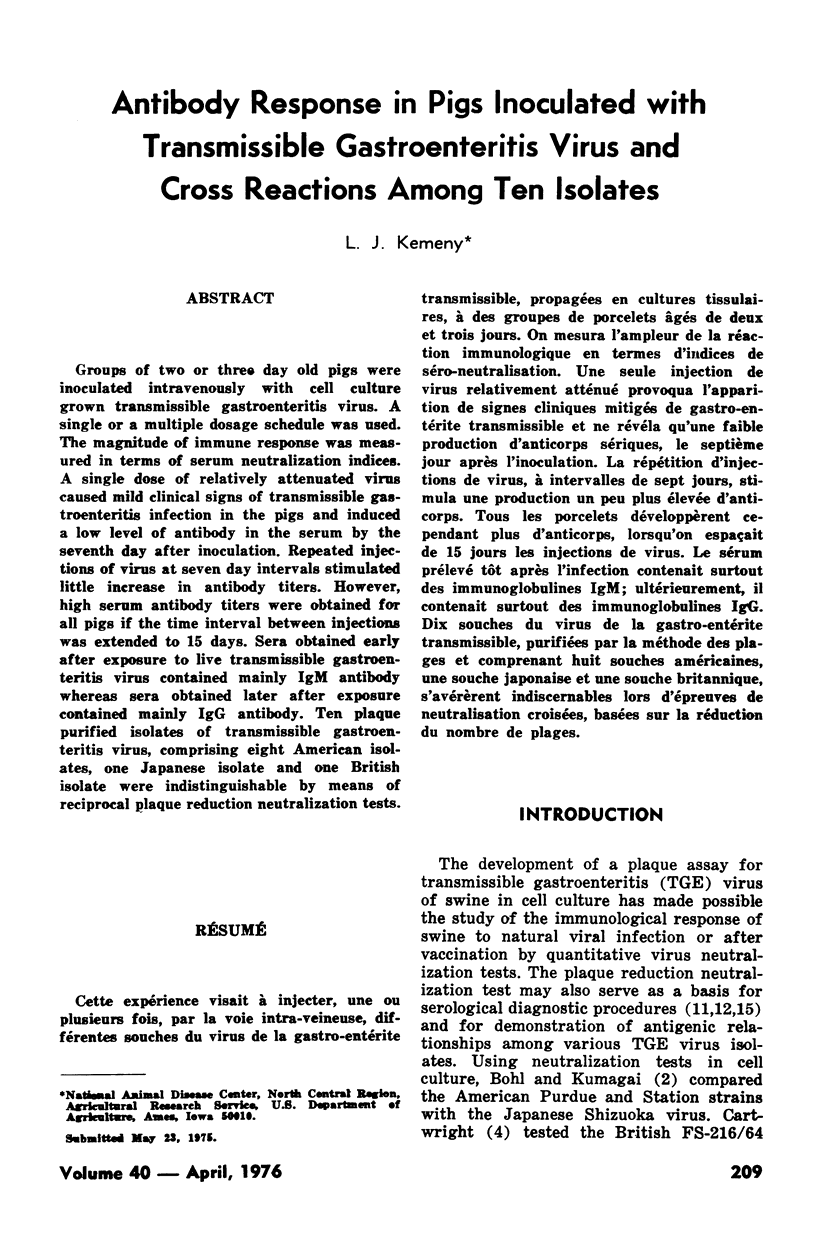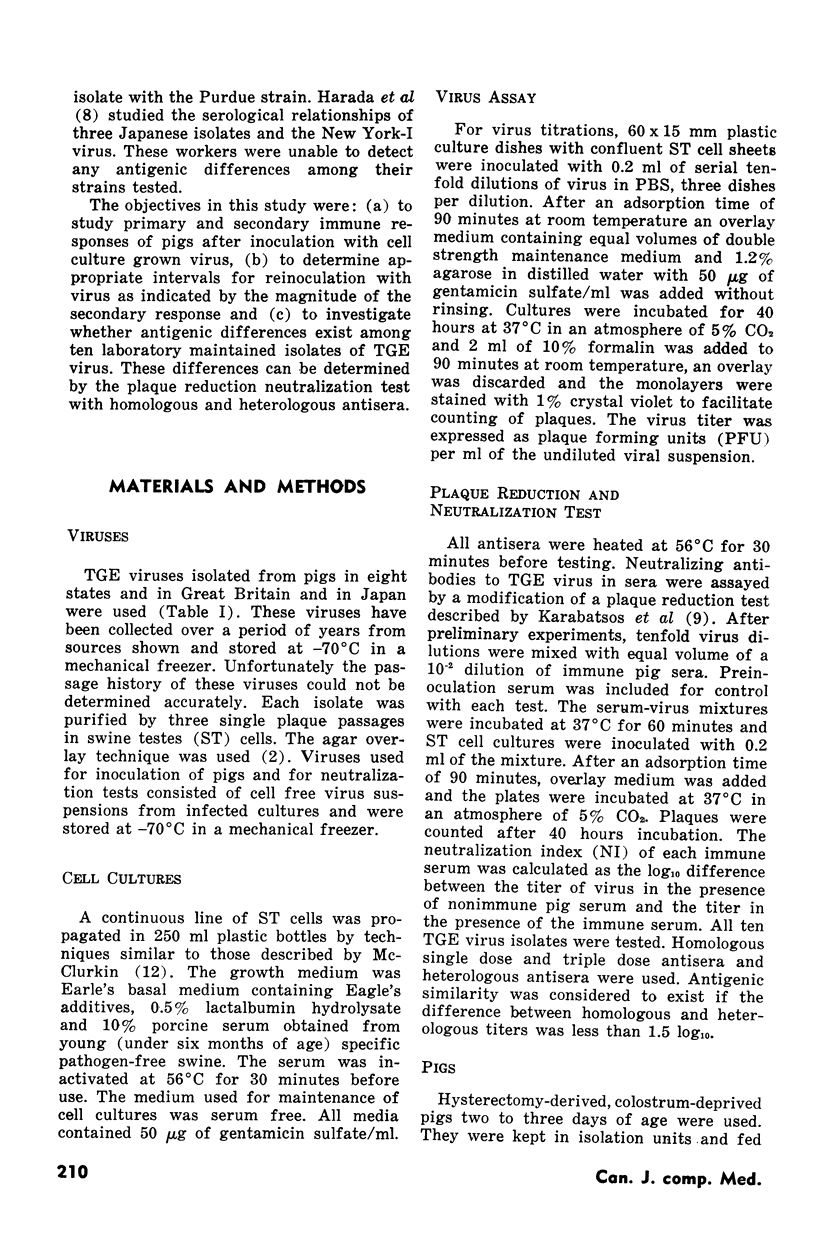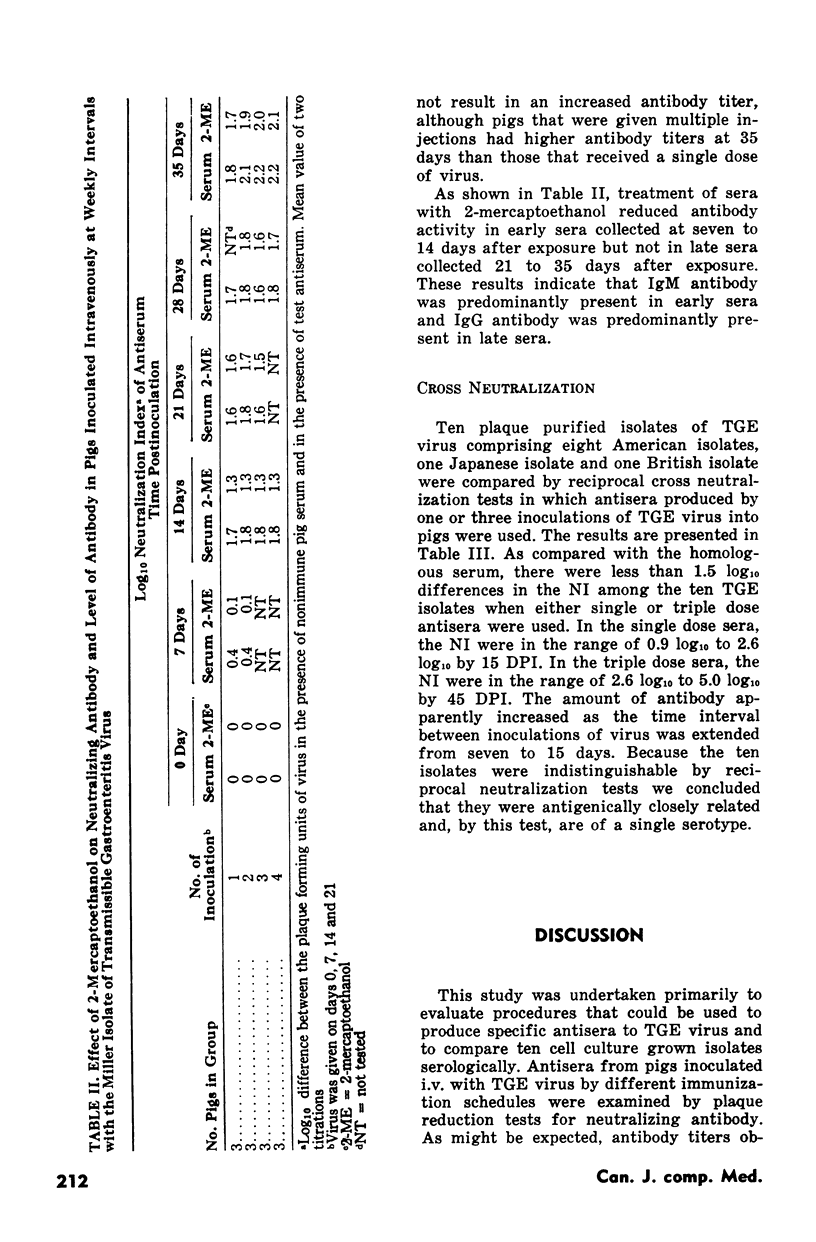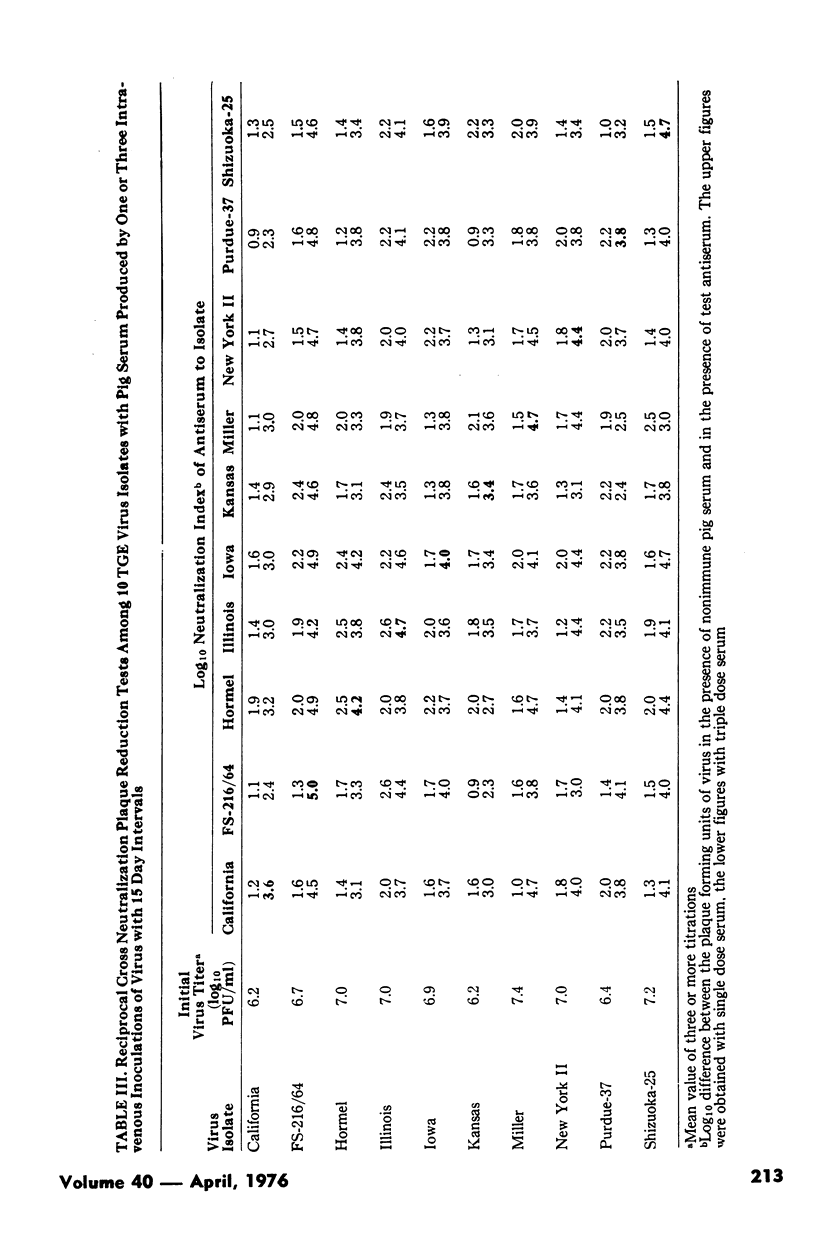Abstract
Groups of two or three day old pigs were inoculated intravenously with cell culture grown transmissible gastroenteritis virus. A single or a multiple dosage schedule was used. The magnitude of immune response was measured in terms of serum neutralization indices. A single dose of relatively attenuated virus caused mild clinical signs of transmissible gastroenteritis infection in the pigs and induced a low level of antibody in the serum by the seventh day after inoculation. Repeated injections of virus at seven day intervals stimulated little increase in antibody titers. However, high serum antibody titers were obtained for all pigs if the time interval between injections was extended to 15 days. Sera obtained early after exposure to live transmissible gastroenteritis virus contained mainly IgM antibody whereas sera obtained later after exposure contained mainly IgG antibody. Ten plaque purified isolates of transmissible gastroenteritis virus, comprising eight American isolates, one Japanese isolate and one British isolate were indistinguishable by means of reciprocal plaque reduction neutralization tests.
Full text
PDF





Selected References
These references are in PubMed. This may not be the complete list of references from this article.
- Cartwright S. F., Harris H. M., Blandford T. B., Fincham I., Gitter M. A cytopathic virus causing a transmissible gastroenteritis in swine. I. Isolation and properties. J Comp Pathol. 1965 Oct;75(4):387–396. doi: 10.1016/0021-9975(65)90019-8. [DOI] [PubMed] [Google Scholar]
- Cowan K. M. Antibody response to viral antigens. Adv Immunol. 1973;17:195–253. doi: 10.1016/s0065-2776(08)60733-6. [DOI] [PubMed] [Google Scholar]
- FECSIK A. I., BUTLER W. T., COONS A. H. STUDIES ON ANTIBODY PRODUCTION. XI. VARIATION IN THE SECONDARY RESPONSE AS A FUNCTION OF THE LENGTH OF THE INTERVAL BETWEEN TWO ANTIGENIC STIMULI. J Exp Med. 1964 Dec 1;120:1041–1049. doi: 10.1084/jem.120.6.1041. [DOI] [PMC free article] [PubMed] [Google Scholar]
- Harada K., Kumagai T., Sasahara J. Studies on transmissible gastroenteritis in pigs. 3. Isolation of cytopathogenic viurs and its use for serological investigation. Natl Inst Anim Health Q (Tokyo) 1967 Fall;7(3):127–137. [PubMed] [Google Scholar]
- KARABATSOS N., BOURKE A. T., HENDERSON J. R. ANTIGENIC VARIATION AMONG STRAINS OF WESTERN EQUINE ENCEPHALOMYELITIS VIRUS. Am J Trop Med Hyg. 1963 May;12:408–412. doi: 10.4269/ajtmh.1963.12.408. [DOI] [PubMed] [Google Scholar]
- Konishi S., Bankowski R. A. Use of fluorescein-labeled antibody form rapid diagnosis of transmissible gastroenteritis in experimentally infected pigs. Am J Vet Res. 1967 Jul;28(125):937–942. [PubMed] [Google Scholar]
- MCCLURKIN A. W. STUDIES ON TRANSMISSIBLE GASTROENTERITIS OF SWINE. I. THE ISOLATION AND IDENTIFICATION OF A CYTOPATHOGENIC VIRUS OF TRANSMISSIBLE GASTROENTERITIS IN PRIMARY SWINE KIDNEY CELL CULTURES. Can J Comp Med Vet Sci. 1965 Feb;29:46–53. [PMC free article] [PubMed] [Google Scholar]
- Osler A. G., Mulligan J. J., Jr, Rodriguez E. Weight estimates of rabbit anti-human serum albumin based on antigen-binding and precipitin analyses: specific hemagglutinating activities of 7 S and 19 S components. J Immunol. 1966 Feb;96(2):334–344. [PubMed] [Google Scholar]
- Stone S. S., DeLay P. D., Sharman E. C. The antibody response in pigs inoculated with attenuated African swine fever virus. Can J Comp Med. 1968 Jul;32(3):455–460. [PMC free article] [PubMed] [Google Scholar]
- YOUNG G. A., HINZ R. W., UNDERDAHL N. R. Some characteristics of transmissible gastroenteritis (TGE) in disease-free antibody-devoid pigs. Am J Vet Res. 1955 Oct;16(61 Pt 1):529–535. [PubMed] [Google Scholar]


